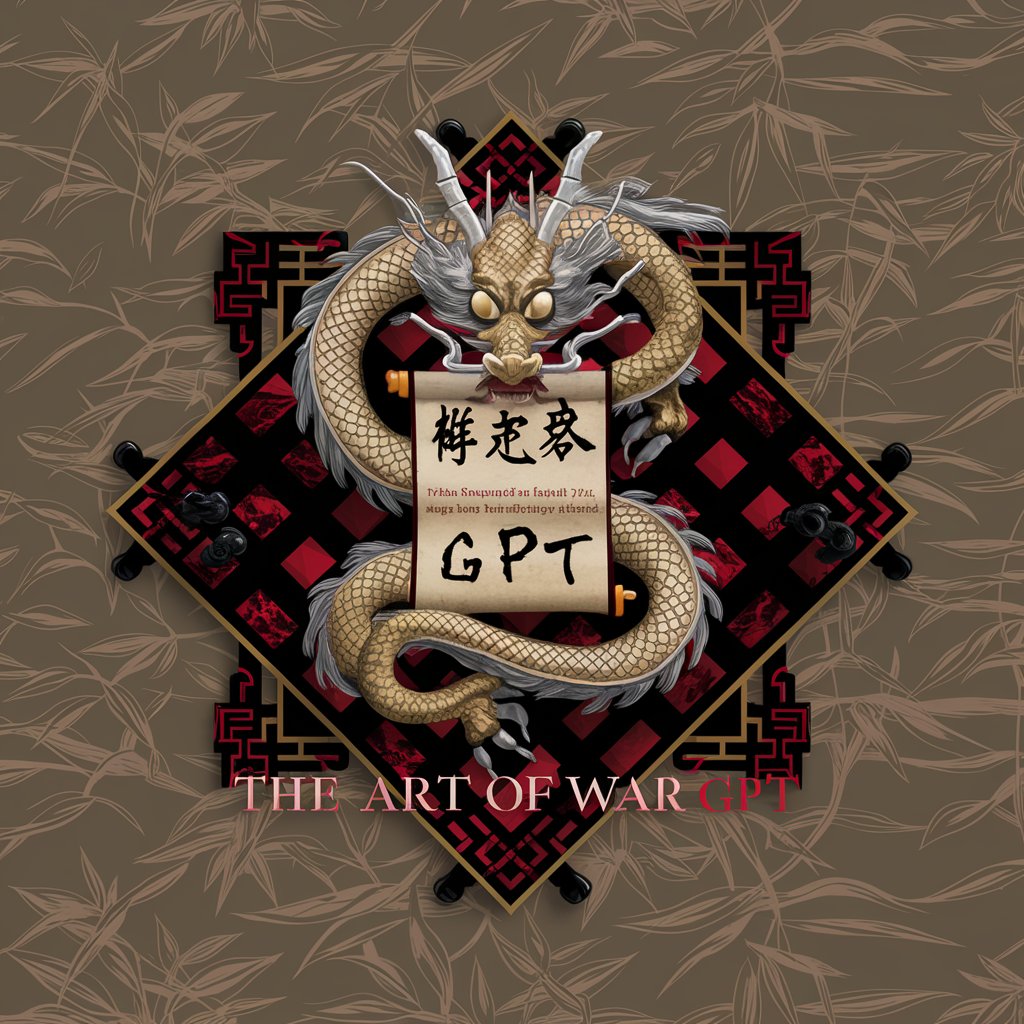
33 Strategies of War - Strategic Conflict Resolution

Welcome! Let's strategize and conquer together.
Master conflict with strategic precision.
How can I apply the strategies from '33 Strategies of War' to
What advice does '33 Strategies of War' give for
Using the principles in '33 Strategies of War,' how should I
What strategy from '33 Strategies of War' would be best for
Get Embed Code
Understanding 33 Strategies of War
The 33 Strategies of War, authored by Robert Greene, is a comprehensive guide that distills ancient and modern military wisdom into 33 comprehensive strategies. These strategies cover various aspects of warfare, including the psychological, offensive, defensive, and unconventional tactics used by great leaders and strategists throughout history. The book aims not only to provide historical knowledge but also to apply these strategies to modern-day challenges, conflicts, and personal struggles. By analyzing and adapting these timeless tactics, readers can learn to navigate complex situations, overcome obstacles, and achieve their objectives more effectively. For instance, the 'Polarity Strategy' teaches the importance of identifying and declaring war on your enemies, emphasizing that clarity and purpose come from standing against what you oppose. Similarly, the 'Counterbalance Strategy' advises on maintaining mental equilibrium amidst chaos, demonstrating how resilience can be cultivated through adversity. Powered by ChatGPT-4o。

Applications and Real-World Scenarios
Strategic Planning
Example
A business leader uses the 'Control the Dynamic' strategy to outmaneuver competition by setting the terms of the market, thereby dictating the pace and direction of the industry.
Scenario
In the fast-paced tech industry, a startup strategically enters the market with an innovative product, forcing larger competitors to adapt to its technology and market approach, thereby gaining a significant first-mover advantage.
Conflict Resolution
Example
An individual employs the 'Turn the Tables' strategy to defuse a hostile negotiation, using patience and strategic withdrawal to gain the upper hand.
Scenario
During a critical merger negotiation, one party uses tactical delays and feigned disinterest to unsettle the opposing party, leading to more favorable terms.
Self-Improvement
Example
Using the 'Death-Ground Strategy,' a person facing career stagnation decides to take a bold leap into a new field, creating a sense of urgency that propels them to success.
Scenario
An individual, feeling complacent in their current role, quits their job to start their own venture. The risk of failure energizes their efforts, leading to unexpected opportunities and personal growth.
Target Audience and Beneficiaries
Leaders and Managers
Individuals in leadership or managerial positions can benefit from understanding and applying these strategies to navigate organizational challenges, lead teams effectively, and outmaneuver competitors in the business world.
Entrepreneurs
Entrepreneurs, facing the uncertainties of the market and the need to make critical decisions under pressure, can use these strategies to identify opportunities, mitigate risks, and steer their startups toward success.
Individuals Seeking Personal Development
People looking to overcome personal obstacles, achieve specific goals, or improve their strategic thinking can find valuable insights in adapting the principles of warfare to their personal lives and careers.

Utilizing the 33 Strategies of War
Initiate without signup
Start by visiting yeschat.ai for a complimentary trial, bypassing the necessity for login or subscribing to ChatGPT Plus.
Identify your conflicts
Recognize and clearly define the personal or professional conflicts you're facing. This clarity will help you choose the most applicable strategies from the book.
Apply strategically
Select and apply strategies directly relevant to your situation. Consider your objectives and the nature of the conflict to identify the most effective tactics.
Reflect and adapt
After applying a strategy, reflect on its effectiveness. Be prepared to adapt your approach based on results and evolving circumstances.
Expand your application
Broaden your use of the strategies to different areas of your life. Learning to apply these tactics flexibly can enhance your problem-solving skills across various domains.
Try other advanced and practical GPTs
Get GPT Chat
Empowering conversations with AI

InstaPost Wizard
Elevate Your Instagram Posts with AI

The LLMC&T5Shots
Empowering Insights with AI-Powered Questions

The Oracle of Africa
Ancient wisdom for modern paths.

Cassie The Travel Advisor
Personalized Travel Planning with AI

Name Generator
Crafting Names with AI Precision

Political Depolarizer
Bridging Divides with AI-Powered Insight

Pyramid Portal
Unlock the Secrets of the Pharaohs with AI

Expense Tracker - Solo Travel
Navigate your finances, powered by AI

Historical Hypothesizer
Imagine history, redefined by AI.

Open A I GPT Chat 3
Elevate your AI interaction experience.

Alternative
Empowering Survival with AI

FAQs about the 33 Strategies of War
What is the primary purpose of the 33 Strategies of War?
The primary purpose is to provide a comprehensive guide to conflict resolution and strategic advantage in various aspects of life, including personal challenges, business competition, and social conflicts.
Can these strategies be applied in everyday life?
Yes, the strategies are designed to be versatile, allowing for application in a wide range of scenarios, from navigating workplace dynamics to personal relationships and self-improvement.
Are the strategies ethical to use?
While the strategies are powerful, their ethical application depends on the user's intentions. They should be used with consideration for fairness and respect for others.
How can I effectively learn and apply these strategies?
Start by focusing on one strategy that resonates with your current challenges. Experiment with its application, observe the results, and gradually incorporate more strategies as you become comfortable.
What makes the 33 Strategies of War relevant today?
Despite being based on historical concepts of warfare, the strategies address timeless aspects of human behavior and conflict, making them relevant to modern challenges in personal and professional settings.





